Haryana Electricity Tariff Hike Impacts All Consumer Categories in 2015-16
Haryana Electricity Regulatory Commission has finalized the tariff for the year 2015-16 as per its order dated 7th May 2015.
Tariff for the domestic consumers consuming more than 500 units are going to see a substantial hike in the tariff. The energy charges for these domestic consumers are increased from Rs 5.98 per kWh to Rs 6.74 per kWh – a 12.9% year to year increase. The FSA, Electricity Duty and the Municipal tax would be over and above this tariff. In effect, these domestic consumers will pay Rs 8.17 per kWh as the variable tariff.
The table below shows the tariff to be paid by domestic categories.
| Energy Charges (Rs per kWh) | FSA (Rs per kWh) | Electricity Duty (Rs per kWh) | Municipal Tax | Variable Charges (Rs per kWh) | |
| Domestic (>500 Units) for a 10 KW connected load | 6.75 | 1.27 | 0.10 | 0.05 | 8.17 |
| Bulk Supply (Domestic) (70 kW and above at 11 kV or above voltage) # | |||||
| Monthly consumption not exceeding 500 units/ flat | 4.70 | 1.15 | 0.10 | 0.05 | 6.00 |
| Monthly consumption exceeding 500 units/flat/ DU. | 5.85 | 1.15 | 0.10 | 0.05 | 7.15 |
# Demand charges are also applicable.
The bulk supply tariff for domestic consumer category is also in excess of Rs 8.00 per kWh after adding the applicable demand charges. This category of consumer includes the large residential condominiums.
As shown below, the Non Domestic or commercial consumers will also pay a tariff of more than Rs 8.10 per kWh in case they have a load between 5 KW and 20 KW. Their tariff is slightly lower than the tariff of domestic consumers. This category includes shops, Malls, Hotels, Hospitals etc.
| Energy Charges (Rs per kWh) | FSA (Rs per kWh) | Electricity Duty (Rs per kWh) | Municipal Tax | Variable Charges (Rs per kWh) | |
| Non Domestic | |||||
| Upto 5 kW (LT) | 6.05 | 1.19 | 0.10 | 0.05 | 7.39 |
| Above 5 kW and Up to 20 kW (LT) | 6.75 | 1.20 | 0.10 | 0.05 | 8.10 |
| Above 20 kW upto 50 kW (LT) | 6.15 | 1.27 | 0.10 | 0.05 | 7.57 |
| Existing consumers above 50 kW upto 70 kW (LT) | 6.50 | 1.29 | 0.10 | 0.05 | 7.94 |
| Consumers above 50 kW (HT) | 6.30 | 1.21 | 0.10 | 0.05 | 7.66 |
Many categories in HT and Bulk supply segment would have a variable tariff of more than Rs 8.00 per kWh apart from paying a fixed demand charges. Overall the tariffs for these categories can go in excess on Rs 10 per kWh.
| Energy Charges (Rs per kWh) | FSA (Rs per kWh) | Electricity Duty (Rs per kWh) | Municipal Tax | Variable Charges (Rs per kWh) | |
| HT Industry (above 50 kW)* | |||||
| Supply at 11 KV | 6.83 | 1.24 | 0.10 | 0.05 | 8.22 |
| Supply at 33 KV | 6.72 | 1.24 | 0.10 | 0.05 | 8.11 |
| Supply at 66 kV or 132 kV | 6.61 | 1.24 | 0.10 | 0.05 | 8.00 |
| Arc furnaces/ Steel Rolling Mills | 6.79 | 1.24 | 0.10 | 0.05 | 8.18 |
| Bulk Supply* | |||||
| Supply at LT | 6.78 | 1.25 | 0.10 | 0.05 | 8.18 |
| Supply at 11 kV | 6.67 | 1.25 | 0.10 | 0.05 | 8.07 |
| Supply at 33 kV | 6.56 | 1.25 | 0.10 | 0.05 | 7.96 |
| Supply at 66 or 132 kV | 6.44 | 1.25 | 0.10 | 0.05 | 7.84 |
| Supply at 220 kV | 6.39 | 1.25 | 0.10 | 0.05 | 7.79 |
*A PF of 0.9 is considered to convert the tariffs to per kWh basis. For Arc furnaces, a PF of 0.95 is used. These categories also have to pay the demand charges.
Suggested Articles

India and IMT-GT JBC Sign MoU to Boost Energy Efficiency in Southeast Asia
The first meeting of the G20 Energy Transitions Working Group was held in Bengaluru, India, and was a success, with participants sharing a consensus on the priority areas of energy security and diversified supply chains.
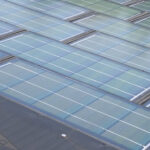
Should You Replace Solar Panels with Solar Shingles?
Discover how solar batteries store excess energy, maximize your solar system’s efficiency, and provide reliable power during outages. Learn about the types, benefits, lifespan, and maintenance tips to make the most of your solar investment.
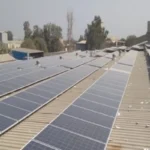
While calculating savings from roof top solar solutions…
Roof top solar solutions are becoming increasingly popular…
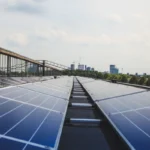
Why Solar Energy Makes Sense for the Healthcare Industry
Explore how the healthcare industry can leverage solar energy to reduce electricity bills, enhance reliability, and support green initiatives.

Demystifying India’s Latest Solar Energy Policies
India is one of the leading countries in terms of solar energy development, having become the fastest-growing market for solar power globally.
Breakthrough in Solar Technology: 33.2% Efficient Perovskite-Silicon Cell
Scientists achieve a breakthrough in solar technology with a perovskite-silicon tandem cell reaching a record 33.2% efficiency for higher energy output.
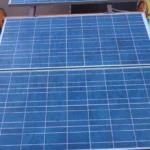
Choosing the Right Solar Panel: Complete Guide for India
Solar is among the fastest-growing industries in India. This is mainly because solar energy is not only renewable but is also attractive from a financial point of view.
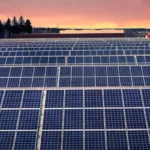
Delhi Government Pledges to Boost Renewable Energy Generation
Delhi, the capital city of India, is moving towards a greener future with an ambitious plan to generate an additional 6,000 MW of electricity using renewable energy sources.
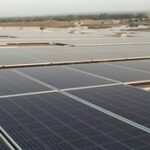
Indian solar market flooded with various Inverters – User discretion required
With Indian government’s target of 100 GW by Solar power,…

What Is a Solar Power Generating System? | Complete Guide
A solar power generating system converts sunlight into electricity for residential, industrial, and commercial use. This blog explains the components, working, and benefits of solar systems, helping you understand how to harness solar energy efficiently and sustainably.